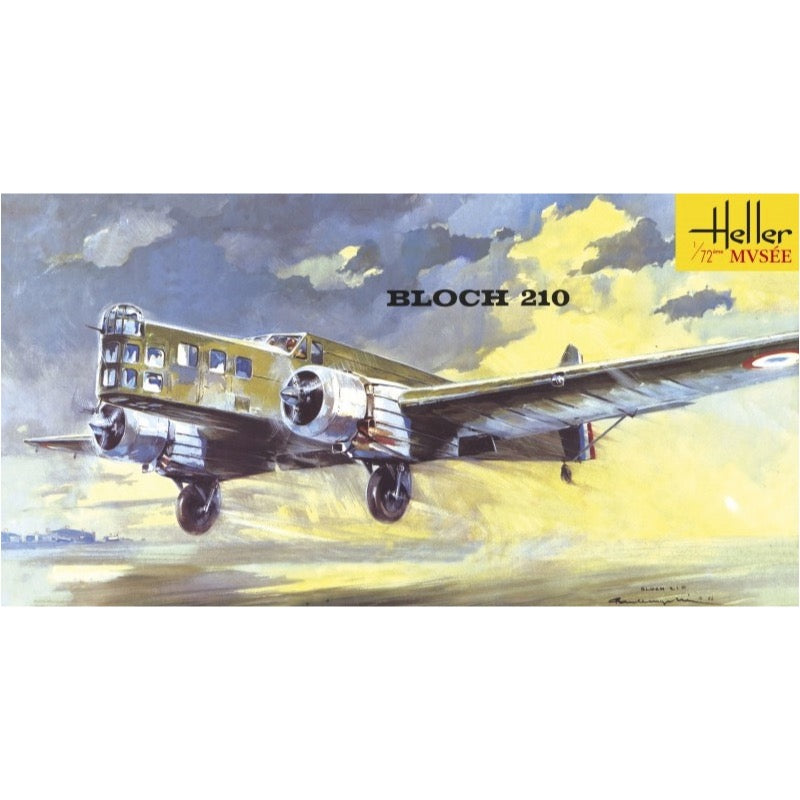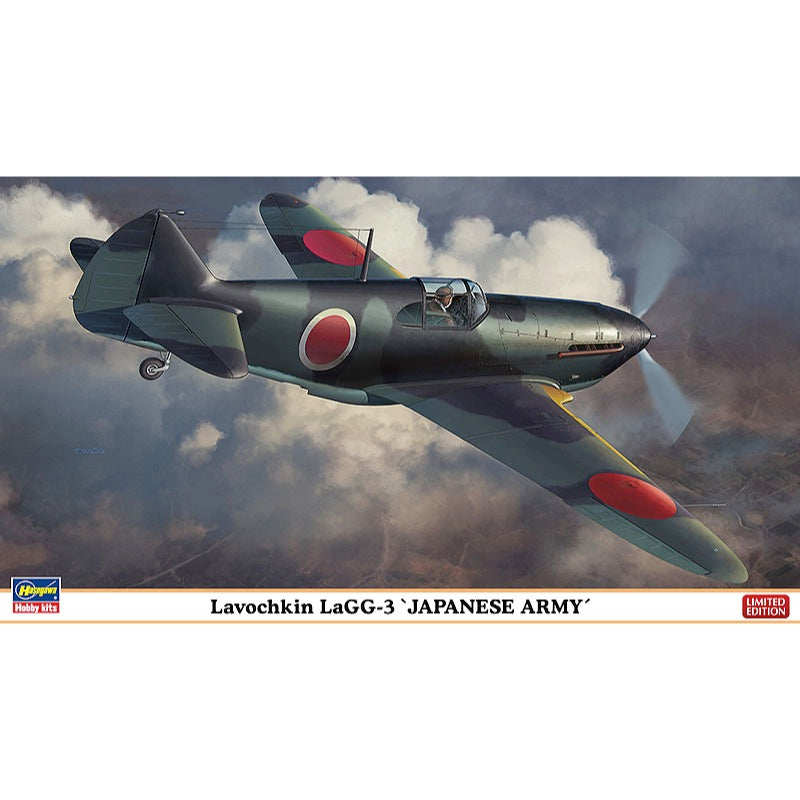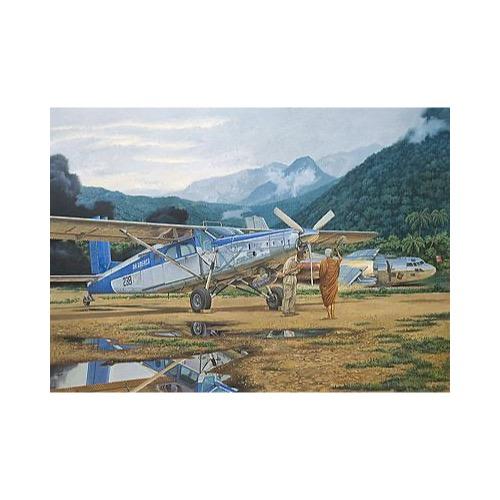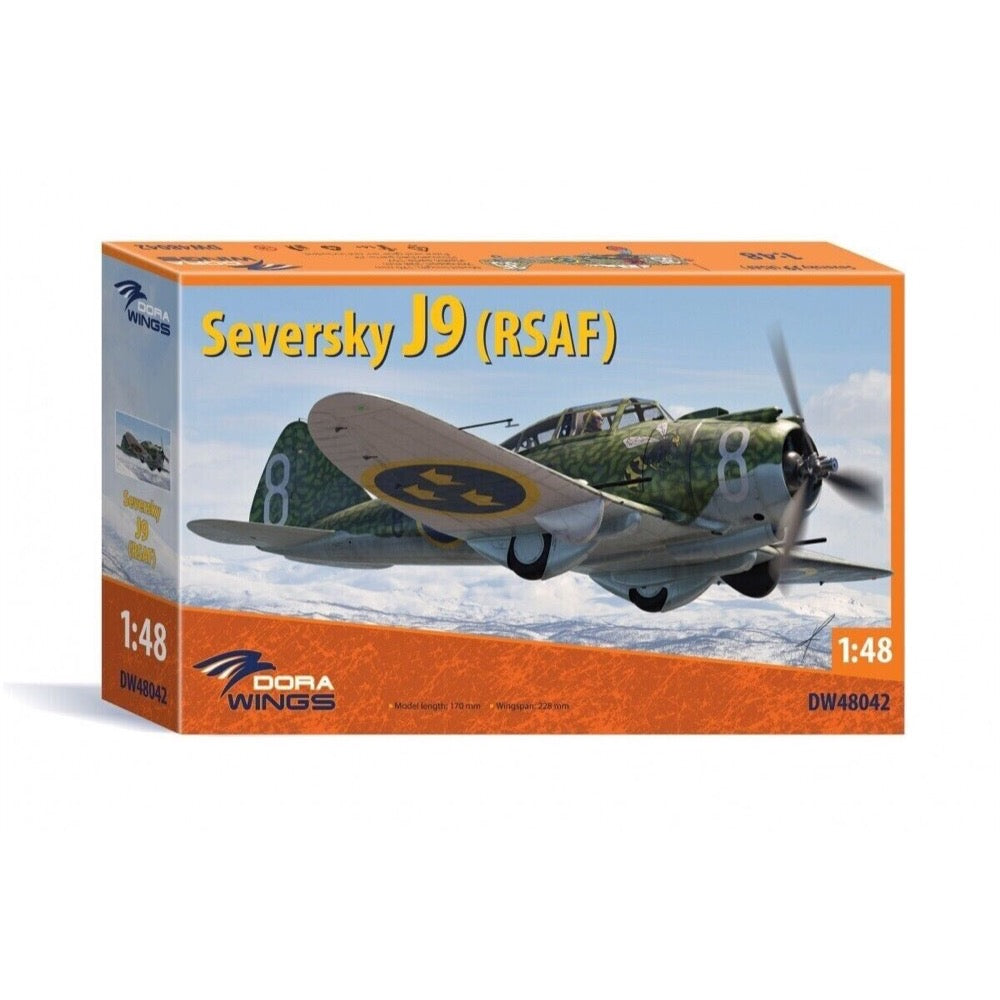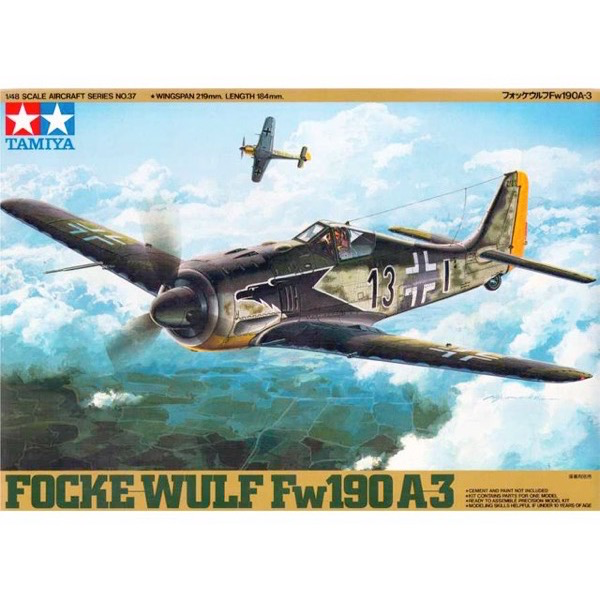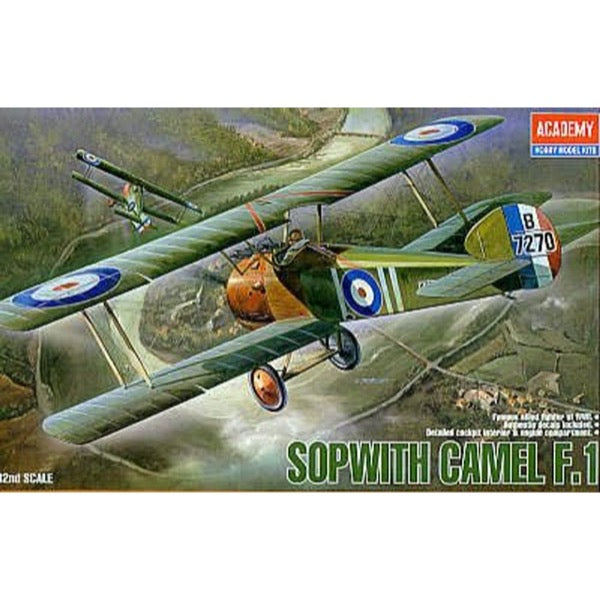
Academy 12109 1/32 Sopwith Camel F-1 Aus Decals
15.00
$
<p>British fighter plane with a wooden structure, a Sopwith Camel biplane from the First World War. The camel owes its nickname to the "hump" in front of the pilot's cabin, which housed machine guns. The Camel was the successor to the successful Sopwith Pup fighter. The first flight of the prototype took place in December 1916, and deliveries to the front units began in the summer of 1917. Technical data: Top speed: 185 km / h; climb speed 5.5 m / s, maximum ceiling 6400 m, armament: two 7.7mm Vickers machine guns, firing through a propeller. In the assault version, 7.7mm Lewis machine guns.</p>
<p>This is an injection-plastic aircraft model kit.</p>
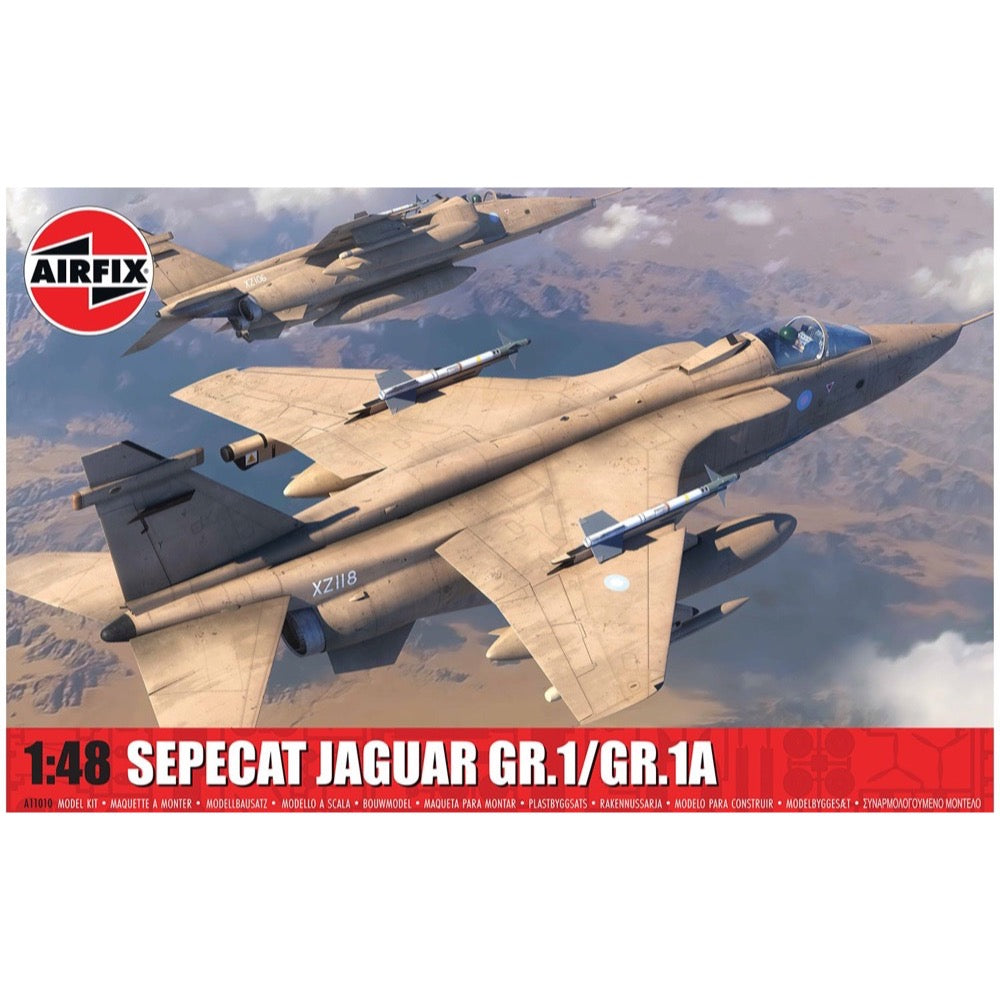
Airfix A11010 1/48 SEPECAT Jaguar GR.1/GR.1A
50.00
$
<p>In May 1965, the Defence Ministries of France and the UK agreed on a joint programme to develop a supersonic trainer and tactical strike aircraft. France had already decided upon the Brequet 1221 design and this, together with the Rolls-Royce/Turbomeca Adour engine became the basis of the Jaguar. Design leadership was with both Brequet Aviation and the British Aircraft Corporation, so the companies established the joint company SEPECAT to coordinate production. </p>
<p>The first two-seat Jaguar trainer flew in September 1968 and the first single-seater in March 1969. Production GR.1 aircraft entered RAF service with 54 sqn in March 1974. The French Air Force phased the type into service earlier in June 1973. The GR.1 for the RAF was a single-seat all-weather strike and ground attack fighter equipped with NAVWASS (navigating and weapons aiming sub-system) enabling it to attack without using radars. </p>
<p>Based mostly in Germany, RAF Jaguars were used for rapid deployment and regional reinforcement, and others flew in the tactical nuclear strike role carrying the WE177 bomb. Upgraded GR.1A Jaguars flew successfully in the 1990 Gulf War, where 12 aircraft flew 612 combat sorties without loss. The final Jaguars were retired from RAF service in April 2007.</p>
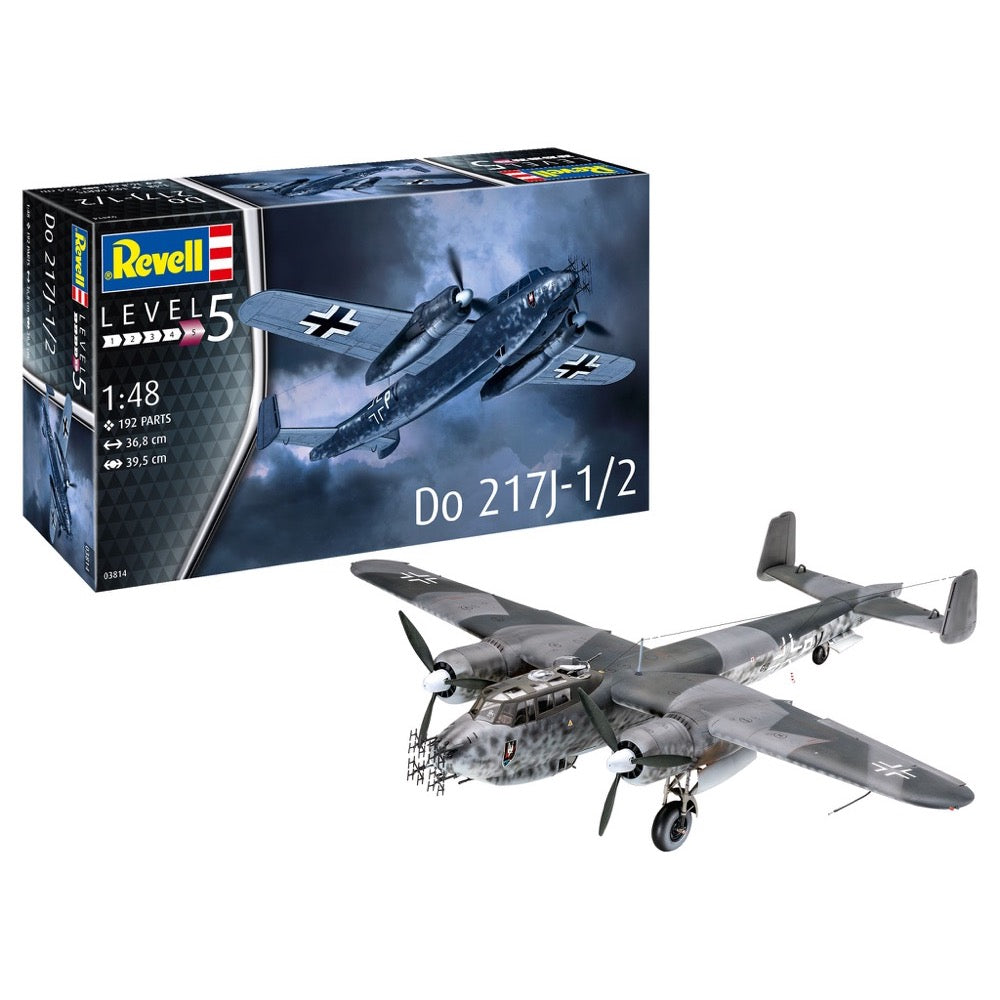
Revell 03814 1/48 Dornier Do 217J 1/2
47.00
$
<h3>Experience the ultimate model building fun with the Do 217J-1/2 in 1:48 scale!</h3>
<p>Dive into the world of model making and discover the impressive 1:48 scale Do 217J-1/2 aircraft! With 200 parts, this kit offers an exciting and challenging project for experienced model builders aged 13 and over. The Do 217J-1/2 is based on the E-version bombers and impresses with its massive nose, equipped with four 20mm cannons and four 7.92mm machine guns. Enjoy hours of building fun and immerse yourself in the fascinating historical world of aviation!</p>
<p>The very detailed kit convinces with extensive decals that make the model a real eye-catcher. Whether as a gift or for your own collection, the 1:48 scale Do 217J-1/2 is an absolute highlight for every model making and aviation enthusiast!</p>
<h3>Includes</h3>
<ul>
<li>
<p>Kit Do 217J-1/2 on a scale of 1:48 with 200 parts</p>
</li>
<li>
<p>Extensive decals</p>
</li>
<li>
<p>Detailed assembly instructions</p>
</li>
</ul>
<h3>Specifications</h3>
<ul>
<li>
<p>Age: 13+</p>
</li>
<li>
<p>Scale: 1:48</p>
</li>
<li>
<p>Length: 437mm</p>
</li>
<li>
<p>Width: 248mm</p>
</li>
<li>
<p>Height:112mm</p>
</li>
</ul>
<p> </p>
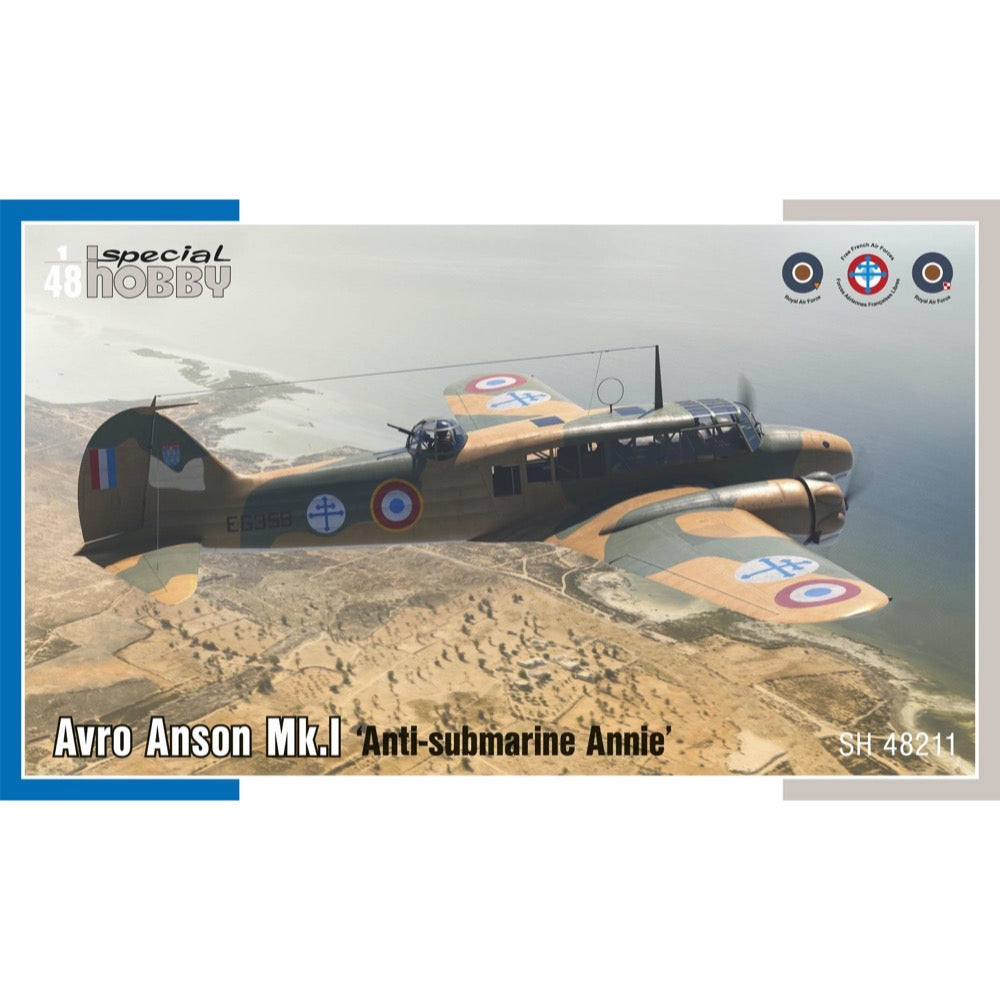
Special Hobby 48211 1/48 Avro Anson Mk.I
42.00
$
<p>Annies, as the Avro Ansons were familiarly known then, flew during WW2 not just over their home skies in the UK, they were widely used also in Africa, Canada or Australia. And at the controls could be seen pilots of many various nationalities. And our SH48211 model kit and its colour schemes reminds us of such airmen who left their often occupied homes to fly and fight against the enemy. The first of the offered options is a No.321 (Dutch) Sqn machine while the second one was used by Poles while at the No.6 Air Observer & Navigator School. The final option is a machine bearing Free French markings and operated over West Africa.</p>
<p>The model is based on an earlier release, however most of the resin parts are now made of injected styrene and can be found on two new sprues. The kit also comes with a fret of pre-coloured etches.</p>
<h3>Features</h3>
<ul>
<li>
<p>Detail resin cast parts and pre-painted etches already in the kit</p>
</li>
<li>
<p>Striking schemes and decals</p>
</li>
<li>
<p>Pre-cut mask set also sold separately</p>
</li>
</ul>
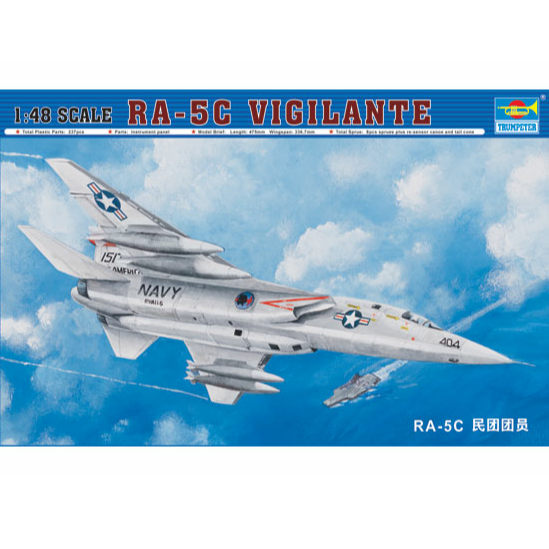
Trumpeter 02809 1/48 RA-5C Vigilante
37.00
$
<p>The RA-5C was developed in parallel with the A-5B, and first flew on 30 June 1962. The RA-5C incorporated all the new features of the A-5B, such as the humpback fuselage, the big flaps, and the leading-edge BLC system. The new BLC scheme proved a little tricky, as it required more engine power. As the RA-5C was substantially heavier than the A-5A, this meant that once the BLC system was engaged the aircraft lost power and tended to drop abruptly. The major difference from the A-5B was the RA-5C's equipment?</p>
<p>The TV camera under the nose became part of the reconnaissance suite, but most of the gear was carried in a long slender "canoe" on the bottom of the aircraft's fuselage and running from the nose gear back towards the tail. The RA-5C entered fleet service in 1964. 43 RA-5Cs were built, following the 12 A-5Bs that had been completed as RA-5Cs. After this batch of 43 was completed, the 43 surviving A-5As and A-5Bs were rebuilt to RA-5C standard, and the production line was shut down. The RA-5C proved so useful in Vietnam that the Navy ordered 46 more RA-5Cs in 1968. Only 36 were actually completed, however, with the last rolling off the production line in August 1970. This final batch featured J-79-GE-10 engines with 79.46 kN (8,100 kgp / 17,860 lbf) afterburning thrust, as well as a leading-edge wing extension trailing back from the air intakes, plus slightly modified air intakes. By this time, the RA-5C had plenty of power and it was no longer such a handful on carrier deck landings</p>
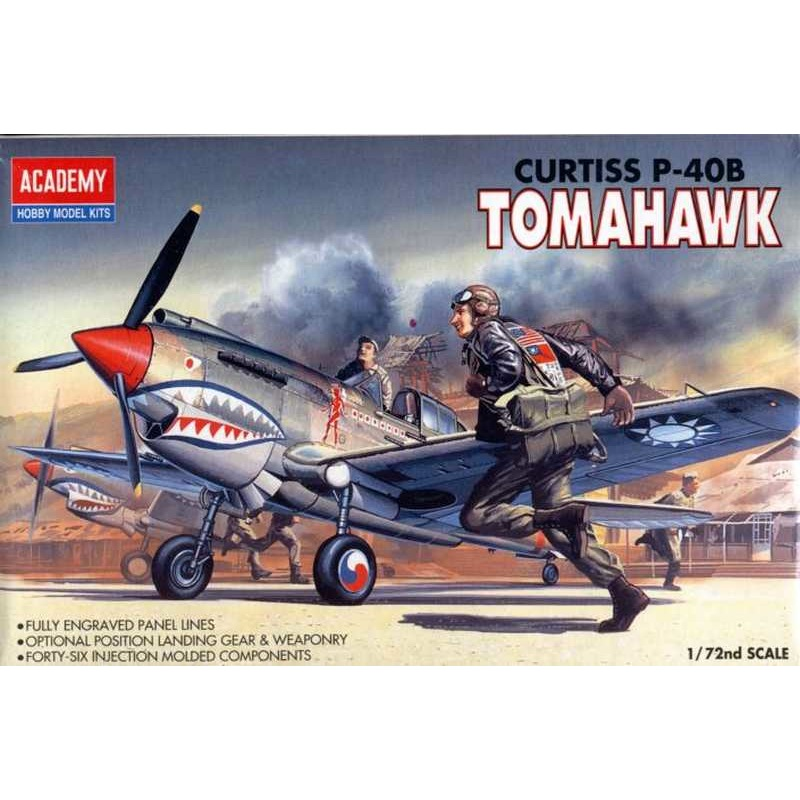
Academy 12456 1/72 P-40B Warhawk
6.00
$
<p>The Curtiss P-40 Warhawk is an American, single-engine, metal fighter-attack aircraft in a low wing configuration with a classic tail. The flight of the prototype took place in 1938, and serial production was carried out in the years 1938-1944. The last of the Hawk family of planes - the Curtiss P-40 Warhawk was, apart from the Republic P-47 and the North American P-51 Mustang, the most widely built American fighter. Technical data (P-40E version): length: 9.66m, wingspan: 11.38m, height: 3.76m, maximum speed: 580km / h, rate of climb: 11m / s, maximum range: 1100km, practical ceiling: 8800m, armament: fixed - 6 M2 machine guns, caliber 12.7 mm, suspended - up to 900 kg of cargo.</p>
<p>This is an injection-plastic jet aircraft model kit.</p>
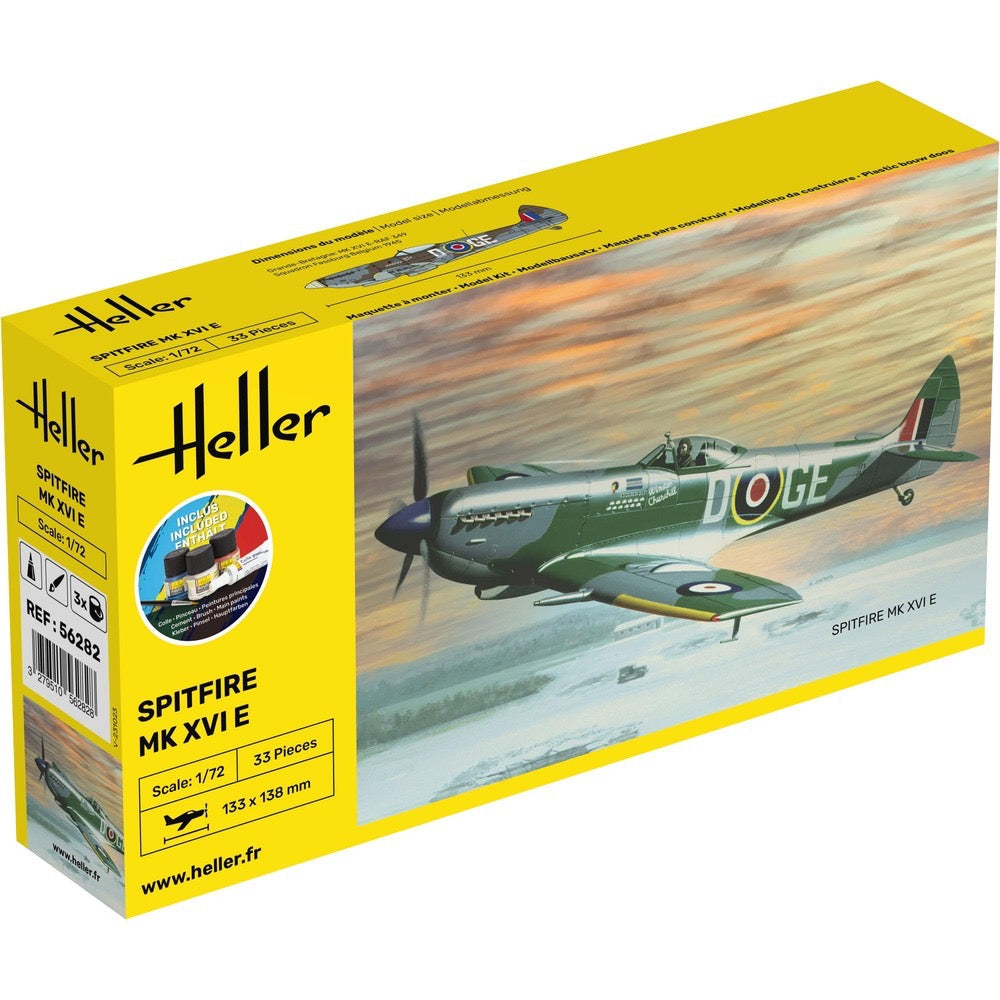
Heller HLL56282 1/72 Spitfire Mk XVI E Starter Kit
10.00
$
<p>Thanks to its numerous successes, the Spitfire is one of the most famous planes of the Second World War. In 1943, in order to increase production of these planes, the engines were manufactured in the USA. This led to the LF Mk XVI model, known as the „king of fighters“. The elegant silhouette is easily recognized from the pared wings, teardrop windscreen and extra slender fin. </p>
<h3>Specification</h3>
<ul>
<li>Scale: 1:72</li>
<li>Parts: 33 pieces</li>
<li>Packaging: 125 x 235 x 45 mm</li>
</ul>
<h3>Includes</h3>
<ul>
<li>Cement</li>
<li>Brush</li>
<li>Main paints</li>
</ul>


